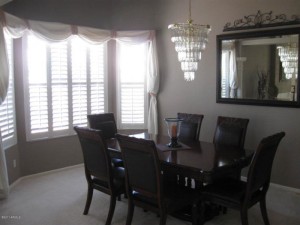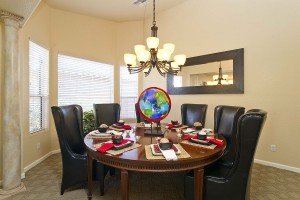 The following photography tips are primarily geared for an SLR (single lens reflective) camera, though most of these settings can also be controlled with compact cameras. If you are curious about an SLR camera, you can find a good entry-level one for about $500, including the lens. It is best to refer to your owner’s manual to see how to adjust these settings, which will likely change with every environment. Trial and error is the best way to learn what looks good and how to remember to change the settings.
The following photography tips are primarily geared for an SLR (single lens reflective) camera, though most of these settings can also be controlled with compact cameras. If you are curious about an SLR camera, you can find a good entry-level one for about $500, including the lens. It is best to refer to your owner’s manual to see how to adjust these settings, which will likely change with every environment. Trial and error is the best way to learn what looks good and how to remember to change the settings.
1. Make sure the battery is charged and you have a memory card in the camera. It’s easy to forget where you may have left the card after transferring photos from it. Before taking a picture, always check your lens and only wipe it with a microfiber lens cleaning cloth if needed.
2. Adjust the image size to the largest setting available for your camera. Fortunately, this is just a one-time setting that your camera will store. This will let you take the biggest photos possible, which is better for resizing (shrinking) or cropping (cutting) in post-production. Keep in mind that the bigger the pictures, the more memory they will take on your card so be prepared.
3. Adjust the white balance using a plain white sheet of paper (or just use camera’s auto setting if you prefer). This tells your camera what is pure white, so you can avoid taking pictures that have blue/green tints to them or where everything comes out looking “brassy”.
4. Adjust the ISO to 800 or even 1600 for naturally brighter pictures. This is crucial to avoid having to lighten the images in post-production. However, be aware that higher ISOs also have some drawbacks. In camera-speak, image noise is referred to as the amount of “graininess” in the photo. Consider the following guide:
ISO 100 for brightly lit places or sunlight outside – no noise
ISO 200 for overcast and cloudy – only a tiny bit of noise
ISO 400 for indoor with or without flash – some noise can be seen
ISO 800 for SLR cameras – most shots taken like this with a compact camera will be very noisy
5. My belief is unless you are using professional softboxes for room lighting, you should always use a flash indoors. You can control the camera’s flash intensity if needed for smaller rooms, by decreasing the burst of flash to avoid “washing out” the subject. Conversely for large open indoor spaces, you can increase the flash strength to get ample lighting. If you choose not to use a flash indoors or for dimly lit rooms, use a tripod for a steady shot. The slow shutter speed in low light situations will make it virtually impossible to hold the camera steady long enough.
6. Get creative with camera angles and use zoom to frame the shot (say to cut out ceilings or avoid bright windows). It’s best to stick with horizontal pics for the MLS but experiment with different angles, using zoom to showcase fixtures, flooring or textures can be very effective.
7. Always take way more pictures of each room or setting than you will ever need. What may look very clear on your camera’s LCD might not look so good at 3888 x 2592 frame size for example. Plus it’s nice to have a bunch of similar images to choose from when previewing them later on your computer. After all, taking 10 or 100 doesn’t cost any more.
Check out another agent’s dark and blurry listing pictures (possibly snapped with a camera phone) of the identical model house to the one I recently sold for my client… if you had just listed your house with this agent, wouldn’t you be totally insulted by their poor picture quality? Photos are the first thing buyers see online and impressions are made within seconds.
Using bright, clean photos doesn’t cost any more and I did not alter or retouch these images in any way. Witness the two pictures from my own listings on the right… can see you see the difference? On the left are another agent’s photos for the EXACT same home model in both examples. Now remember, these are actual pictures from my own listings compared to what other agents would use to market your property!




Who would you trust with the sale of your home?
